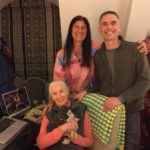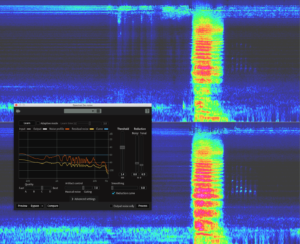If you talk to anyone in the production side of the music industry a common theme is how long projects can take from concept to completion. This has much to do with budgets, rewrites, shifting timelines especially in film work and yes, sometimes neurotic directors.
On the other side of the coin is I need it yesterday even though I told you about it today… That said, sometimes a production delay truly is a good thing. That is the case with the Dr. Jane Goodall audio book adaption of the classic My Life with Chimpanzees.  I wrote about the experience of recording of Dr. Jane reading the 160+ book in my previous post Recording an Icon. I would have never imagined that fifteen months later I would be still working on the production; release now slated for later this year.
I wrote about the experience of recording of Dr. Jane reading the 160+ book in my previous post Recording an Icon. I would have never imagined that fifteen months later I would be still working on the production; release now slated for later this year.
The most fortunate aspect of this production delay is I now I have updated tools at my disposal. Specially, Isotope’s RX6 Advanced Audio restoration software that was not available until recently. In version 6 of what has become the new standard for audio repair, Isotope has really raised the bar in fast and effective tools for solving complicated audio problems. I have been using RX for years, but now I really can say I could not get the quality results especially when dealing with forensic audio work, within out it.
So naturally I have put RX6 it to work on a wide range of remote recordings and samples of every variety, useful in sculpting sound design elements to producer Ruth Mendelson’s exacting standards.
In my June 2016 Audio Alchemy post I wrote: The craft of audio alchemy as I practice it is sometimes about mixing and mastering. Yet in the extreme cases, it’s about breathing new life into audio, which, then will manifest in a better form. I likened the process to that of transmutation. Which brings us to the very real-world awesomeness of RX 6 deconstructive capability.
Deconstruction for Sonic Sculpting
Sometimes the task is about peeling away specific elements to shape the audio so it works better contextually within the soundtrack. A great example of this is the De-hoofing or the deconstruction of the resonant hoof sound of a Zebra to soften its gate.

Additionally, I have used RX6 on a myriad sounds captured half a world away that include: a very vocal Kingfisher, the bark of a bush buck, angry hissing and honking swans, chimpanzees and baboons eating with reckless abandon, a cacophony of nights sounds from Kruger National Park, sauntering giraffe, scampering children, peepers in the night, clucking chickens, one large bellicose hippo and the very deliberate steps of a very large elephant.
A future post will talk to the final stages of putting all the elements of this seminal work together as we approach deadline for delivery.
 In the end, I feel privileged to have had a part in preserving a much-loved classic in a new enduring form in contribution to an ever-enduring legacy.
In the end, I feel privileged to have had a part in preserving a much-loved classic in a new enduring form in contribution to an ever-enduring legacy.
Thanks for reading.



